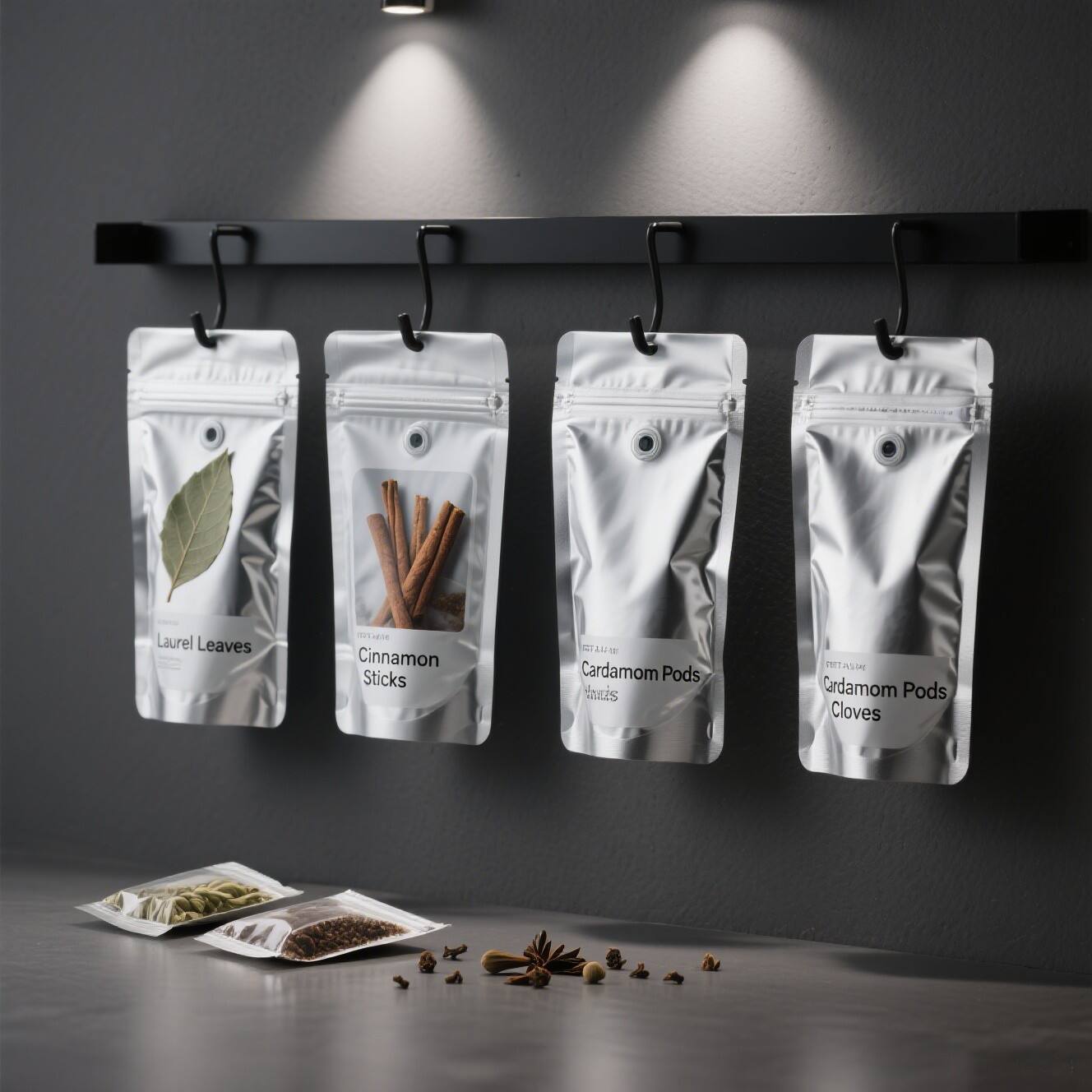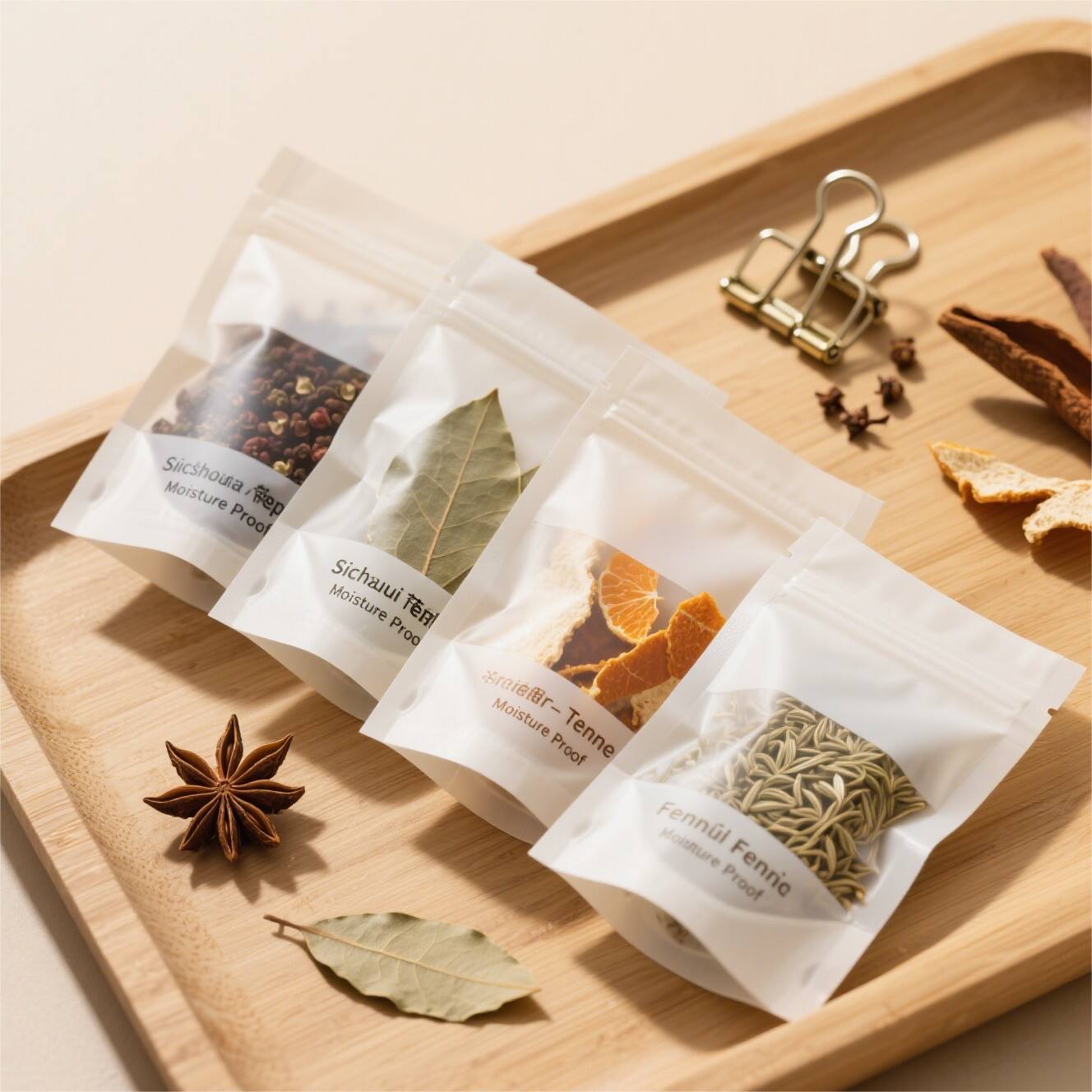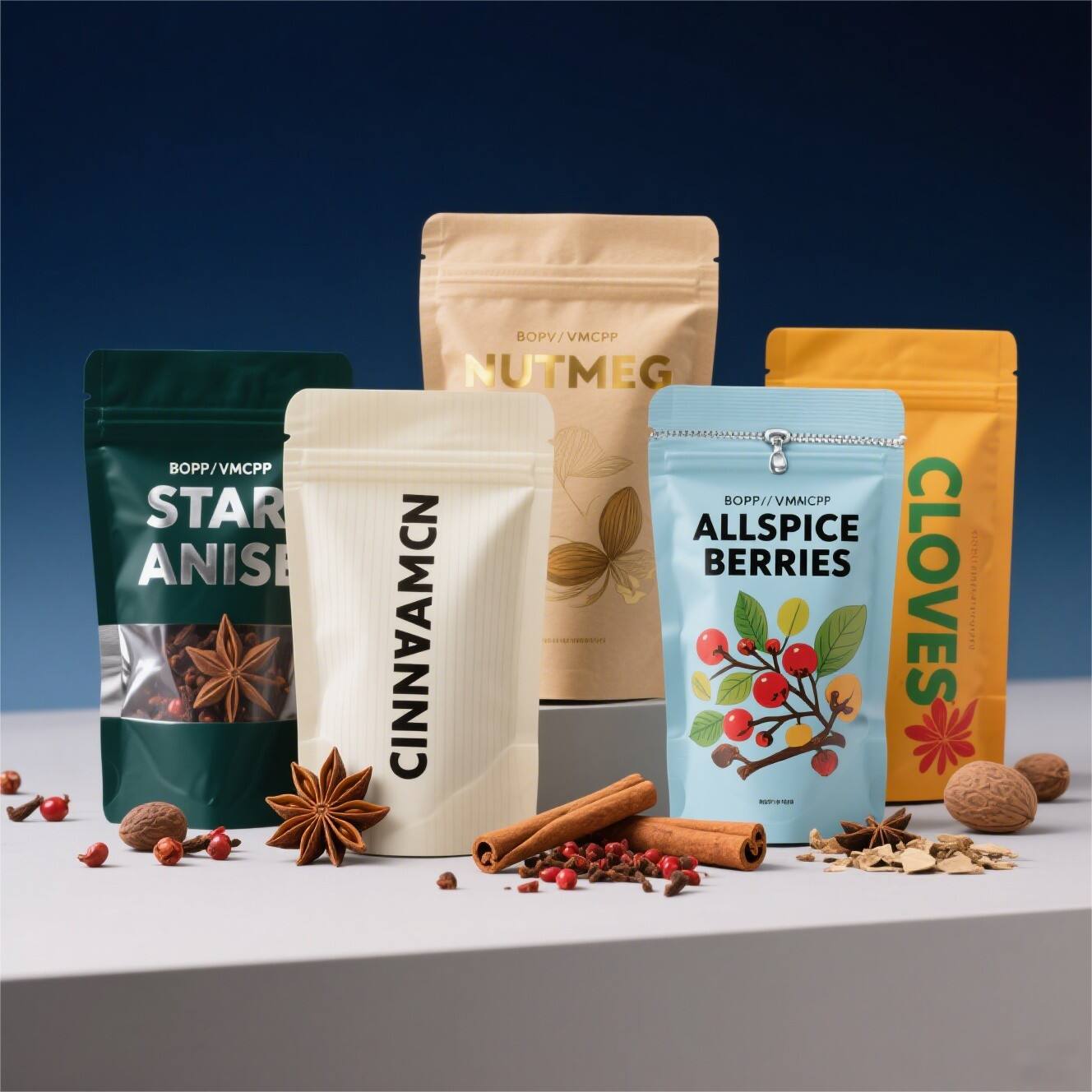Spices and condiments are often dried or finely powdered. These products are susceptible to moisture, causing them to clump, lose their aroma due to oxidation, and need to be protected from odor contamination. Plastic packaging bags, with their flexi...

Spices and condiments are often dried or finely powdered. These products are susceptible to moisture, causing them to clump, lose their aroma due to oxidation, and need to be protected from odor contamination. Plastic packaging bags, with their flexible material selection and functional design, precisely address these storage challenges while also ensuring ease of use. They are widely used in the industry, as follows:
1.Basic protective packaging: PE or PE composite bags offer moisture and odor resistance, making them suitable for dried goods like Sichuan peppercorns and star anise. They prevent moisture from clumping and odor transfer, extending their shelf life.
2.Quantitative portable packaging: Small, individual PE bags hold small amounts of chili powder and cumin powder, making them convenient for single-serving use at home or suitable for takeout, preventing contamination.
3.Light-proof and fresh-keeping packaging: PET/AL/PE composite bags containing aluminum foil block light and oxygen, reducing the evaporation of flavors like bay leaves and cinnamon, while preserving aroma and quality.
4.Transparent display packaging: PET/PE transparent bags clearly display the color and appearance of colored peppercorns and whole cloves, making it easier for consumers to select and increase their purchase intention.


